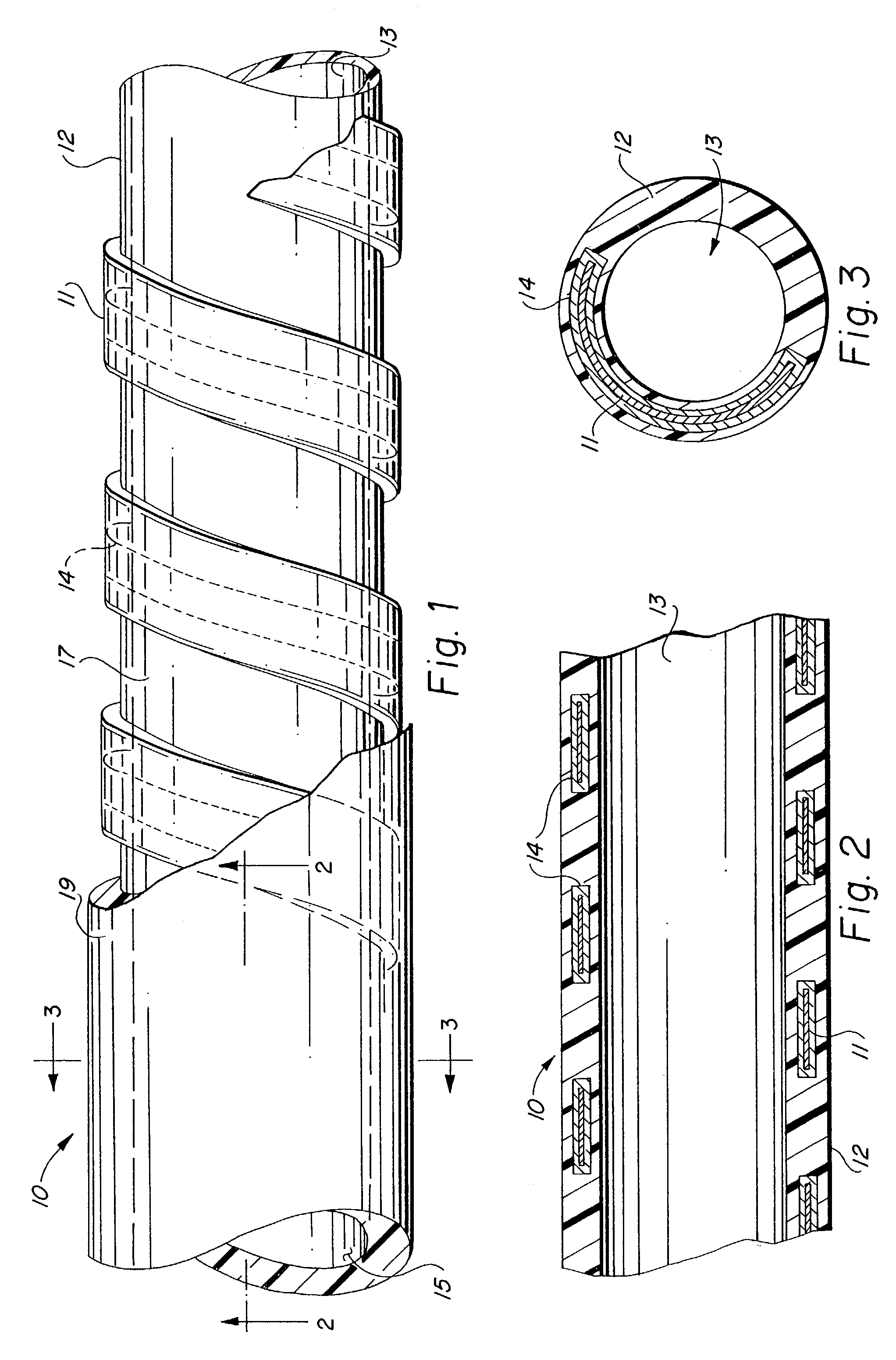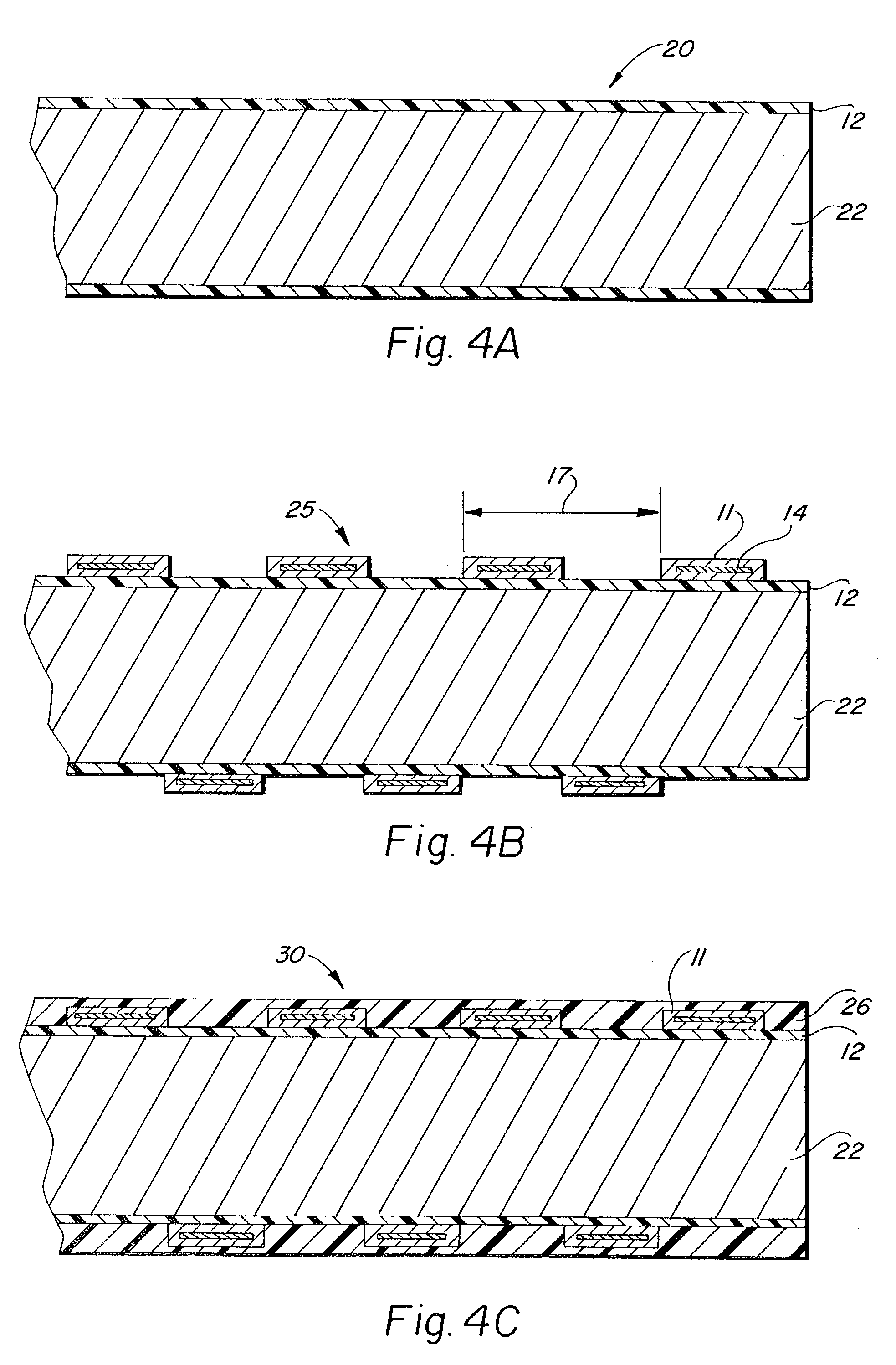Methods for making a supported graft
a vascular graft and supported technology, applied in the field of intraluminal grafts, can solve the problems of inconvenient intraluminal stent placement, inconvenient use, and insufficient diametric mechanical rigidity of conventional eptfe vascular grafts,
- Summary
- Abstract
- Description
- Claims
- Application Information
AI Technical Summary
Benefits of technology
Problems solved by technology
Method used
Image
Examples
first embodiment
[0053]Turning now to FIGS. 5–12, there is depicted numerous alternate configurations of the polymer clad support wire member 14. FIGS. 5 and 6 depict the polymer clad support wire member 34 in which the support wire member is formed as a planar ribbon wire 38 a generally tubular box-like polymer cladding 36 provided about the outer surfaces of the planar ribbon wire 38. In the transverse cross-sectional view of FIG. 6 it will be seen that both the planar ribbon wire 38 and the polymer cladding 36 have generally quadrilateral cross-sectional configurations.
second embodiment
[0054]FIGS. 7–8 depict the polymer clad support wire member 40 in which the support wire member is formed as a cylindrical wire 44 having a generally tubular polymer cladding 42 provided about the outer circumference of the planar ribbon wire 44. In the transverse cross-sectional view of FIG. 8 it will be seen that both the cylindrical wire 44 and the polymer cladding 42 have generally circular cross-sectional configurations.
[0055]FIGS. 9–12 are provided in the transverse cross-sectional views only, it being understood that like FIGS. 5 and 7, each of the embodiments depicted in FIGS. 9–12 have corresponding perspective configurations. FIG. 9 depicts a third embodiment of the polymer clad support wire member 46 in which the support wire member is formed as a cylindrical wire having a generally triangular-shaped polymer cladding 48, with a central longitudinal cylindrical bore to accommodate the cylindrical wire 49 therein, which is provided about the outer surfaces of the cylindrica...
PUM
| Property | Measurement | Unit |
|---|---|---|
| inner diameter | aaaaa | aaaaa |
| inner diameter | aaaaa | aaaaa |
| wall thickness | aaaaa | aaaaa |
Abstract
Description
Claims
Application Information
 Login to View More
Login to View More - R&D
- Intellectual Property
- Life Sciences
- Materials
- Tech Scout
- Unparalleled Data Quality
- Higher Quality Content
- 60% Fewer Hallucinations
Browse by: Latest US Patents, China's latest patents, Technical Efficacy Thesaurus, Application Domain, Technology Topic, Popular Technical Reports.
© 2025 PatSnap. All rights reserved.Legal|Privacy policy|Modern Slavery Act Transparency Statement|Sitemap|About US| Contact US: help@patsnap.com



